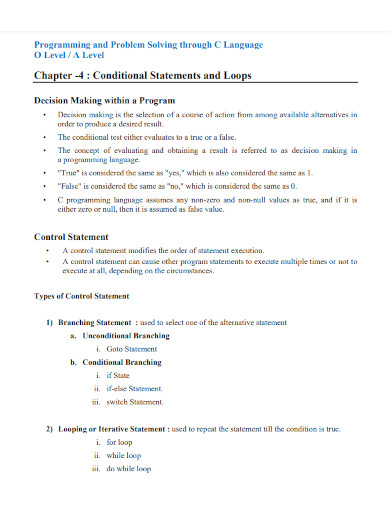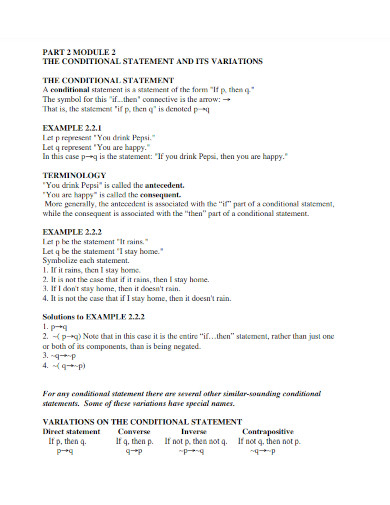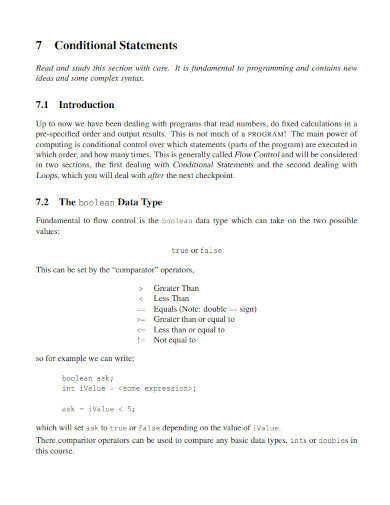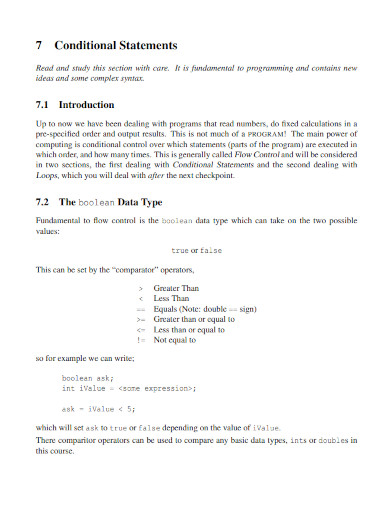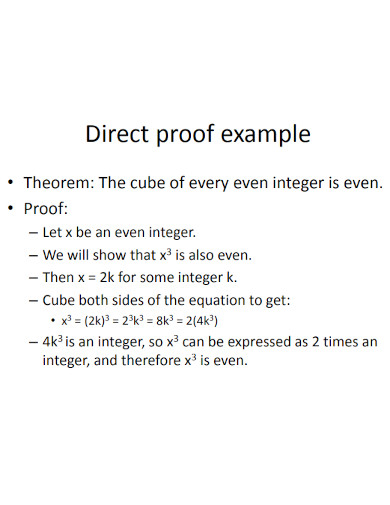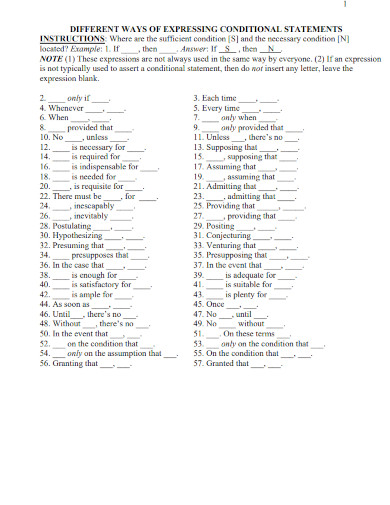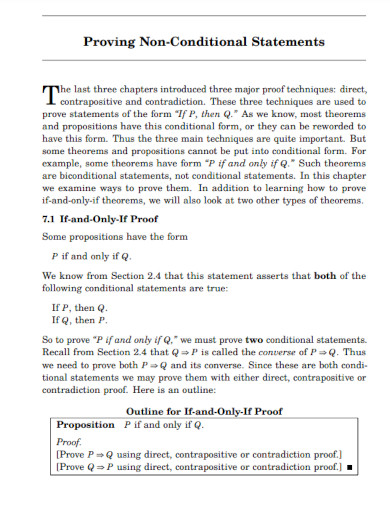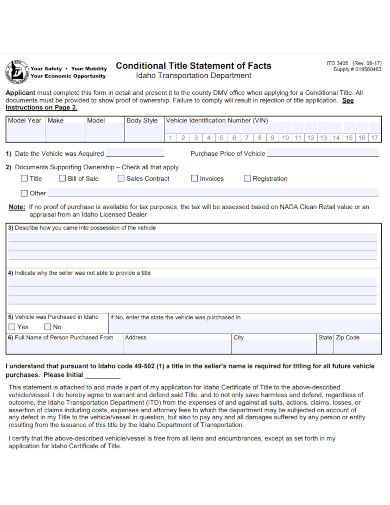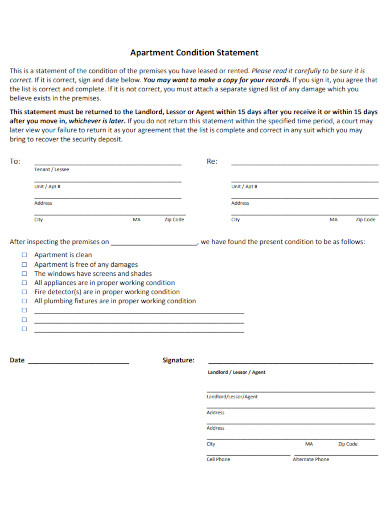10+ Conditional Statement Examples to Download
The conditional statement is a sentence structure or a coding structure that will indicate a specific procedure, situation, or occurrence and the conditions that are required. This sentence structure can be used in various situations.
1. Conditional Statement Template
2. Conditional Statements Loops Template
3. Conditional Statements Variations
4. 7 Conditional Statements
5. Validity and Conditional Statements
6. Proofs of Conditional Statements
7. Expressing Conditional Statement
8. Proving Non-Conditional Statements
9. Sentiment Analysis of Conditional Statement
10. Conditional Title Statement of Facts
11. Apartment Condition Statement
What Is a Conditional Statement
The conditional statement is a term used to describe the usage of a statement that will express an event or a situation that may arise in the present or future. These statements are characterized by the if clause and the main clause.
How to Write a Basic Conditional Statement
A well-written conditional statement can easily lay out the conditionals and the situation that happens when the conditions are met. If you want to learn more about conditional statements and their usage in programming, you may read any of the conditional statement templates, variations, and other articles on the list above.
1.) Structure the Phenomenon or Situation
Begin by thinking about a phenomenon or situation in that you want to create a basic conditional statement. This could come in the form of everyday situations like missing chores, walking, exercising, and the like. You may write the structure on note-taking software or a physical notepad.
2.) Write the If Clause
When you have finished thinking about the structure of the phenomenon or situation, you may write begin by writing down the if clause. Most of the time the if clause will begin with the word if. If you want to come with me, is an example of an if clause.
3.) Repeat Step 2, When there are Multiple Conditionals
When the situation or phenomenon has plenty of conditionals, you must repeat step 2 until you have finished writing down all the if clauses. If you want to come to the mall and window shop with me, is an example of an if clause with multiple conditionals.
4.) Write the Main Clause or the After Effect
After you have finished writing the if clause, then you will now need to write down the main clause that will accompany the if statement. This should be the aftereffect, the situation, or the phenomenon that will happen when the if statement is met.
FAQs
Why is it important to understand the concept of a conditional statement?
The conditional statement allows us to easily express specific intentions when we are communicating with other people. This is because there is a logical sequence of events that will occur when the if clause is met. The concept of conditional statements allows us to understand and communicate various cause-and-effect relationships which allow us to give advice, and discuss facts. Not only is it used in communication, but conditional statements are also used in HTML, Python, and other programming languages. This is because conditional statements operate with simple logic that the computer can parse and understand.
How often are conditional statements used in coding?
Conditional statements are used a lot in programming and coding. This is done through the usage of if, else if, and else statements and code. They are often defined by the statement true or false, which is inserted after the if statement. The true or false statement allows the computer to decide what option to do when the if statement is met.
Can the If/else statement has 2 conditions?
Yes, other statements can have more than one condition be true at the same time. When there are 2 or more if conditions the statement becomes a bit more complex. This is because if the 2 If statements are not met, then the after effect stated by the main clause will not occur.
Conditional Statements are statements used in the English language to express a cause and effect when the if clause is met. These conditional statements usually come in the form of the If clause and the main clause, where the if clause is conditional and the main clause is the effect. Conditional statements also have usage and importance outside of the English language as they can be used in app and webpage development and coding.



